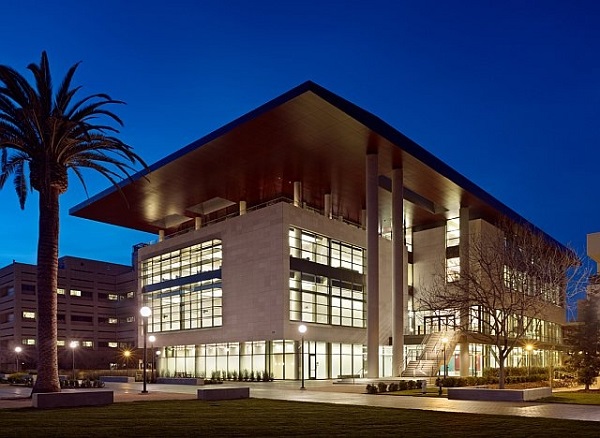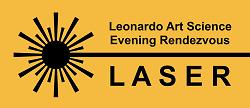The LASERs are a national program of evening gatherings that bring artists and scientists together for informal presentations and conversation with an audience. See the program for the whole series.
The event is free and open to everybody.
Email me if you want to be added to the mailing list for the LASERs.
Like previous evenings,
the agenda includes some presentations of art/science projects,
news from the audience, and time for casual socializing/networking.
Where: Stanford University, LiKaShing building - Room LK120
There should be ample parking in the structure on corner of Campus Drive West and Roth Way. (Stanford map)
Parking is mostly free at Stanford after 6pm.
Program (the order of the speakers might change):
- 7:00-7:25:
 David Stork (Rambus Labs) on "The scourge of fake art"
The intriguing world and motivations of master forgers ... Read more
David Stork (Rambus Labs) on "The scourge of fake art"
The intriguing world and motivations of master forgers ... Read more
- 7:25-7:50:
 Andrey Kurenkov (Stanford/ Computational Vision Lab) on "How impressive are recent A.I. accomplishments, really?".
Despite the major accomplishments of the last two years, there are fundamental flaws in today's A.I... Read more
Andrey Kurenkov (Stanford/ Computational Vision Lab) on "How impressive are recent A.I. accomplishments, really?".
Despite the major accomplishments of the last two years, there are fundamental flaws in today's A.I... Read more
- 7:50-8:10: BREAK. Before or after the break, anyone in the audience currently working within the intersections of art and science will have 30 seconds to share their work. Please present your work as a teaser so that those who are interested can seek you out during social time following the event.
- 8:10-8:35:
 Li Jiang (Director of Stanford AI, Robotics and Education) on "AI, Robotics and Future Education "
A deep understanding of robotics and AI is necessary to design the education systems of the future... Read more
Li Jiang (Director of Stanford AI, Robotics and Education) on "AI, Robotics and Future Education "
A deep understanding of robotics and AI is necessary to design the education systems of the future... Read more
- 8:35-9:00:
 Stephanie Brown (USF/ Museum Studies) on "Authenticity, apples, and the art market: The mystery of 1939.34.3"
What does it mean for a work of art to be considered a forgery, and what does the idea of authenticity in art imply?... Read more
Stephanie Brown (USF/ Museum Studies) on "Authenticity, apples, and the art market: The mystery of 1939.34.3"
What does it mean for a work of art to be considered a forgery, and what does the idea of authenticity in art imply?... Read more
- 9:00pm-9:30pm: Discussions, networking
You can mingle with the speakers and the audience
Watch it live on your mobile device by using
periscope @lasertalks
twitter @lasertalks
Watch it live on your personal computer by using
https://twitter.com/lasertalks
https://www.periscope.tv/lasertalks
See also...
Other LASER series
Archive of past LASERs
Leonardo ISAST
Art, Technology, Culture Colloquia
CODAME
ScienceSchmoozer
LAST Festival
Other recommended events
Bios:
- Stephanie Brown has worked in museums as an executive director, curator, historian, and archivist. Her work has ranged from designing and implementing collections plans to curating exhibitions to institutional strategic planning. She is currently the guest curator for the Haggin Museum's reinstallation and reinterpretation of its permanent art collection. Stephanie's professional and academic interests include curatorial practice, material culture studies, and public history. Stephanie is on the Museum Studies faculty at the University of San Francisco, where she also teaches in the Art History/Arts Management program. Previously, she taught Museum Studies at Johns Hopkins University and was Executive Director of the Chevy Chase Historical Society in Chevy Chase, Maryland. Dr. Brown also served as Associate Curator for American Material Culture and Historian at Hillwood Estate, Museum and Gardens in Washington, D.C. Stephanie has a B.A. in History from Williams College and a Ph.D. in European History from Stanford University.
- Li Jiang (Stanford/ Robotics) is the director of Stanford AIRE (AI, Robotics and Education). Dr. Jiang has been working in the field of Robotics and AI for more than 2 decades. His current research focuses on how AI and robotic technologies will impact our education system and how we need to adjust our education system to accommodate the coming era of robotics and AI. Dr. Jiang was the top award,"Best of Innovations Award" winner for 2014 Consumer Electronics Show (CES) Innovation Awards and he is a board member of International Robotic Expert Committee for China. Dr. Jiang has more than 50 U.S and international patents granted and pending. He holds a Master degree on Innovative Design and Ph.D on Robotics from Stanford University.
- Andrey Kurenkov is a graduate student in Stanford's Computational Vision and Learning Lab. He conducts research at the intersection of robotics and computer vision, and is co-advised by Silvio Savarese and Ken Goldberg. Besides robotics (particularly, intelligent robotics that can interact with humans), his interests include: programming (especially embedded programming), energy/climate change (the reason behind his EE degree), photography, video games (mostly narrative-driven, indie, Mass Effect-type games), cinema (Tarkovsky, Aronofsky, Kaufman, Kurosawa, Bergman, Carruth, Kon, Miyazaki, Zvyagintsev, etc), and hard science fiction.
- Piero Scaruffi is a cultural historian who has lectured in three continents and published several books on Artificial Intelligence and Cognitive Science, the latest one being "The Nature of Consciousness" (2006). He pioneered Internet applications in the early 1980s and the use of the World-Wide Web for cultural purposes in the mid 1990s. His poetry has been awarded several national prizes in Italy and the USA. His latest book of poems and meditations is "Synthesis" (2009). As a music historian, he has published ten books, the latest ones being "A History of Rock and Dance Music" (2009) and "A History of Jazz Music" (2007). His latest book of history is "A History of Silicon Valley" (2011). The first volume of his free ebook "A Visual History of the Visual Arts" appeared in 2012. His latest book is "Intelligence is not Artificial" (2013). He has also written extensively about cinema and literature. He founded the Leonardo Art Science Evening Rendezvous (LASER) in 2008. Since 2015 he has been commuting between California and China, where several of his books have been translated.
- David Stork is Rambus Fellow and directs research in the Computational Sensing and Imaging Group at Rambus Labs in Sunnyvale CA. A graduate in Physics from MIT and the University of Maryland, he's held faculty positions in Physics, Mathematics, Computer Science, Statistics, Electrical Engineering, Psychology, Neuroscience and Art and Art History variously at Wellesley and Swarthmore Colleges and Clark, Boston and Stanford Universities. He has lectured on computer image analysis of art over 250 venues in 14 countries, including major museums such as the Louvre, National Gallery London, National Gallery Washington, Metropolitan Museum of Art, Museum of Modern Art, van Gogh Museum, and Venice Biennale, and has published widely on the subject including as co-editor of the first three volumes on computer image analysis in the study of art. He delivered the 2011 C. P. Snow Memorial Lecture celebrating scholarly work spanning the arts and sciences. He is author of the second edition of Pattern classification, co-author of Seeing the Light: Optics in nature, photography, color, vision and holography. He holds 42 US patents and is a senior member of both the Optical Society of America and IEEE as well as a Fellow of the International Association for Pattern Recognition (IAPR), of the International Academy, Research and Industry Association (IARIA), and of SPIE.
Extended abstracts:
Kurenkov
Reinforcement learning (RL) is one of the basic subfields within Artificial Intelligence. In an RL framework, an agent interacts with an environment to learn what actions it needs to take in any given environment state to maximize its long-term reward. Despite the major accomplishments of the last two years (such as DeepMind's AlphaGo and AlphaZero, as well as OpenAI's Dota bots), RL is fundamentally flawed and more complex accomplishments may not be possible under pure RL. Different approaches within AI can address those limitations.
Jiang
Within the next 10 to 20 years, many jobs will be replaced by robots, including not only labor intensive work such as drivers and factory workers, but jobs that were thought to be safe from takeover, like law and technical writing. However, our education systems have barely changed in this same 10 to 20-year time period. We may very well be churning out students that have few job prospects upon their graduation. A deep understanding of robotics and AI is necessary to design education systems that will produce people who will collaborate with robots instead of competing with robots in the near future.
Stork
The problem of fake, forged and misattributed paintings in museum and private collections and in the broader commercial art market is large and unrecognized by much of the art community and the art-loving public. The economic cost of such fake art may be as high as a trillion dollars worldwide, and the cost to our cultural understanding and patrimony is beyond estimation. This talk will begin with a brief overview of the classes of fake art (forgeries, fakes, copies, misattributions, ...), some of the motivations of forgers and their accomplices such as dealers and restorers, and the social, business, academic, and other forces that make it difficult to identify fake art and remove it from circulation. It will describe the intriguing world and motivations of master forgers such as Han van Meegeren, Wolfgang Beltracci, Mark Landis, and others, and describe key discoveries, such as the recent revelation that 82 out of the 140 works in the Terrus Museum are fake. and examples, such as the quirky $10m lawsuit against artist Peter Doig for not proving that he did not paint a work attributed to him. The talk will also describe briefly some of the methods for authenticating art and detecting fakes, such as the analysis of medium (oil, watercolor, ...) and support (paper, canvas, ...), the role of provenance (documentary history of ownership of works), iconography, computer image analysis, and the role of connoisseurship.
Brown
What does it mean for a work of art to be considered a forgery, and what does the idea of authenticity in art imply? What does it mean for an artwork to be real, and why do we value the real so highly? And what is the role of museums in determining what's authentic and what isn't? In 1929, collector Eila Haggin McKee bought what she thought was a painting by Gauguin. The painting hung in Stockton's Haggin Museum for over seventy-five years.before it was labeled a forgery. In this talk, drawn from research I have conducted for the Haggin, I will examine the history of ownership of this painting before 1929, and the tumultuous art world of 1890s Paris that may have seen its creation. Finally, through this painting's particular story, I will investigate the ways that scholars determine authenticity, and the relationship between museums, as guardians of the real, and their public.
Photos and videos of this evening
|









